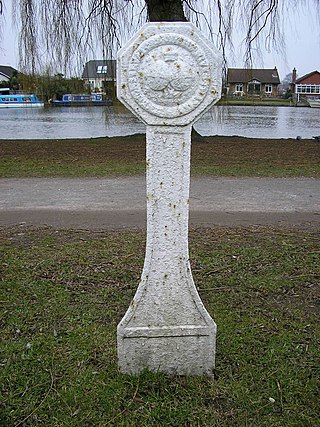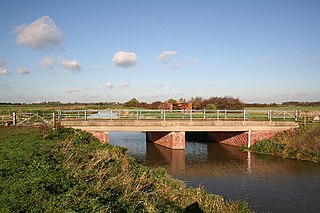Related Research Articles

New Zealand is divided into sixteen regions for local government purposes. Eleven are administered by regional councils, and five are administered by unitary authorities, which are territorial authorities that also perform the functions of regional councils. The Chatham Islands Council is not a region but is similar to a unitary authority, authorised under its own legislation.
A local board of health was a local authority in urban areas of England and Wales from 1848 to 1894. They were formed in response to cholera epidemics and were given powers to control sewers, clean the streets, regulate environmental health risks including slaughterhouses and ensure the proper supply of water to their districts. Local boards were eventually merged with the corporations of municipal boroughs in 1873, or became urban districts in 1894.

The Thames Conservancy was a body responsible for the management of that river in England. It was founded in 1857 to replace the jurisdiction of the City of London up to Staines. Nine years later it took on the whole river from Cricklade in Wiltshire to the sea at Yantlet Creek on the Isle of Grain. Its territory was reduced when the Tideway was transferred to the Port of London Authority in 1909.

The Water Act 1973 is an act of the Parliament of the United Kingdom that reorganised the water, sewage and river management industry in England and Wales. Water supply and sewage disposal were removed from local authority control, and ten larger regional water authorities were set up, under state control based on the areas of super-sets of river authorities which were also subsumed into the new authorities. Each regional water authority consisted of members appointed by the Secretary of State for the Environment, and by the various local authorities in its area.
River boards were authorities who controlled land drainage, fisheries and river pollution and had other functions relating to rivers, streams and inland waters in England and Wales between 1950 and 1965.
River authorities controlled land drainage, fisheries and river pollution in rivers, streams and inland waters in England and Wales between 1965 and 1973.

An internal drainage board (IDB) is a type of operating authority which is established in areas of special drainage need in England and Wales with permissive powers to undertake work to secure clean water drainage and water level management within drainage districts. The area of an IDB is not determined by county or metropolitan council boundaries, but by water catchment areas within a given region. IDBs are geographically concentrated in the Broads, Fens in East Anglia and Lincolnshire, Somerset Levels and Yorkshire.
An operating authority is a body empowered under the Land Drainage Act 1991 or Water Resources Act 1991 to undertake land drainage or flood protection work in England and Wales. Operating authorities include internal drainage boards, the Environment Agency and local authorities.

The Water Resources Act 1991 (WRA) is an Act of the Parliament of the United Kingdom that regulates water resources, water quality and pollution, and flood defence. Part II of the Act provides the general structure for the management of water resources. Part III explains the standards expected for controlled waters; and what is considered to be water pollution. Part IV provides information on mitigation through flood defence.
A regional water authority, commonly known as a water board, was one of a group of public bodies that came into existence in England and Wales in April 1974, as a result of the Water Act 1973 coming into force. This brought together in ten regional units a diverse range of bodies involved in water treatment and supply, sewage disposal, land drainage, river pollution and fisheries. They lasted until 1989, when the water industry was privatised and the water supply and sewerage and sewage disposal parts became companies and the regulatory arm formed the National Rivers Authority. Regional water authorities were also part of the Scottish water industry when three bodies covering the North, West and East of Scotland were created in 1996, to take over responsibilities for water supply and sewage treatment from the regional councils, but they only lasted until 2002, when they were replaced by the publicly owned Scottish Water.

The Land Drainage Act 1930 was an act of Parliament passed by the United Kingdom Government which provided a new set of administrative structures to ensure that drainage of low-lying land could be managed effectively. It followed the proposals of a royal commission which sat during 1927.

The Land Drainage Act 1961 was an Act of Parliament passed by the United Kingdom Government which provided mechanisms for river boards to raise additional finance to fund their obligations. It built upon the provisions of the Land Drainage Act 1930 and the River Boards Act 1948.

Holderness Drain is the main feature of a Land Drainage scheme for the area of Holderness to the east of the River Hull in the East Riding of Yorkshire, England. Construction began in 1764, and several notable civil engineers were involved with the scheme over the years. Despite the high costs of the initial scheme, it was not particularly successful, because of the refusal of the ship owners of Hull to allow an outlet at Marfleet. They insisted that the water be discharged into the River Hull to keep the channel free of silt. Following a period of agricultural depression and the building of new docks in the early 1800s, an outlet at Marfleet was finally authorised in 1832. A high level system still fed upland water to the Hull, but the low level system discharged into the Humber, where levels were considerably lower. Following the success of steam pumping on the Beverley and Barmston Drain, the trustees looked at such a possibility for the Holderness Drain, but the development of the Alexandra Dock in the 1880s and then the King George V Dock in 1913 provided a solution, as the docks were topped up with water pumped from the drain, to lessen the ingress of silt-laden water.

The Water Resources Act 1963 is an act of the Parliament of the United Kingdom that continued the process of creating an integrated management structure for water, which had begun with the passing of the Land Drainage Act 1930. It created river authorities and a Water Resources Board. River authorities were responsible for conservation, re-distribution and augmentation of water resources in their area, for ensuring that water resources were used properly in their area, or were transferred to the area of another river authority. The river authorities covered the areas of one or more of the river boards created under the River Boards Act 1948, and inherited their duties and responsibilities, including those concerned with fisheries, the prevention of pollution, and the gauging of rivers. It did not integrate the provision of public water supply into the overall management of water resources, but it introduced a system of charges and licenses for water abstraction, which enabled the river authorities to allocate water to potential users. This included the water supply agencies, who now needed their supplies to be licensed.

The Salmon and Freshwater Fisheries Act 1975 is a law passed by the government of the United Kingdom in an attempt to protect salmon and trout from commercial poaching, to protect migration routes, to prevent willful vandalism and neglect of fisheries, ensure correct licensing and water authority approval. This helps to sustain the rural inland freshwater fisheries industry, which employs around 37,000 people in the UK.

The Water Act 1989 is an act of the Parliament of the United Kingdom that reorganised the bodies responsible for all aspects of water within England and Wales. Whereas previous legislation, particularly the Water Act 1973, had focused on providing a single unifying body with responsibility for all water-related functions within a river basin or series of river basins, this legislation divided those functions up again, with water supply, sewerage and sewage disposal being controlled by private companies, and the river management, land drainage and pollution functions becoming the responsibility of the National Rivers Authority.

The River Till is a river in the county of Lincolnshire in England and is ultimately a tributary of the River Witham. Its upper reaches drain the land east of Gainsborough. The middle section is embanked, as the water level is higher than that of the surrounding land, and pumping stations pump water from low level drainage ditches into the river. Its lower reaches from the hamlet of Odder near Saxilby into the city of Lincoln were canalised, possibly as early as Roman times, as part of the Foss Dyke.

The River Boards Act 1948 was an Act of Parliament passed by the United Kingdom Government which provided constitutional, financial and general administrative structures for river boards, which were responsible for the management of river board areas, and superseded the catchment boards that had been set up under the Land Drainage Act 1930.

Commissions of sewers, originally known as commissions de wallis et fossatis were English public bodies, established by royal decree, that investigated matters of land drainage and flood defence. The commissions developed from commissions of oyer and terminer in the 13th century and had powers to compel labourers to work on flood defences and extract funding for repairs from landowners. The commissions were placed on a statutory basis in 1427 by an act of Parliament, the Sewers Act 1427 and were strengthened by later acts such as the 1531 Statute of Sewers and the Commissions of Sewers Act 1708. The commissions were abolished by the Land Drainage Act 1930, though some survived until after the Second World War. Their duties were assumed by internal drainage boards and river authorities.
The Rivers of the County of Essex, England have been managed and controlled by a number of statutory bodies since 1931. These have variously aimed to ensure the effective drainage of water courses; ascertain accurate flowrates; manage, measure and control pollution; regulate the abstraction and impounding of water; manage the treatment and supply of water; and manage sewage treatment and disposal.
References
- ↑ "Land Drainage Act 1991". Legislation.gov.uk. Retrieved 18 October 2016.